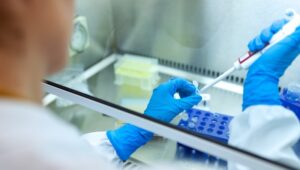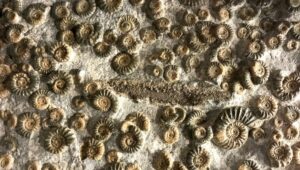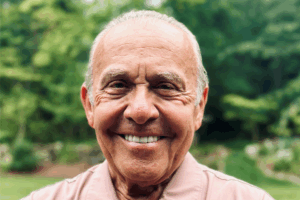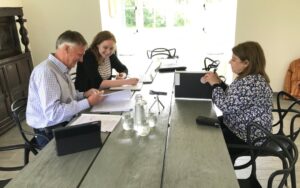The Covid-19 vaccine pioneers
Female scientists have been pivotal to breakthrough discoveries for centuries.
Most recently, two women have stood out, not only as scientific pioneers but also as important players in the fight against Covid-19: Katalin Karikó and Sarah Gilbert. Their vital work has helped in the development of effective vaccines against the virus and, in turn, the saving of many lives.
Hungarian biochemist Katalin Karikó’s work in the field of messenger RNA (mRNA) protein therapies research led to the development of the Pfizer/BioNTech vaccine, which uses an innovative approach to bring about the production of the relevant antibodies in the human body when infected with the SARS-COV-2 virus. While the vaccine has been hailed as a groundbreaking technology, its history dates from the 1990s when Karikó first laid the foundations of her research.
Photo by ThisisEngineering RAEng on Unsplash
As is often the case, knowledge gained from earlier seemingly unrelated work can be applied elsewhere and it was Karikó’s research, carried out in collaboration with immunologist Drew Weissman, into the use of mRNA in gene therapy for treating diseases such as cancer and AIDS that laid the foundations for developing a Covid vaccine. Furthermore, it is likely that many other difficult-to-treat diseases will be fought using this technology that appears to have many applications.
Meanwhile, in a separate race to beat Covid, another female scientist has been playing a leading role. Vaccinologist Sarah Gilbert, who is professor of vaccinology at the University of Oxford’s prestigious Jenner Institute, has been heading the team that is producing a coronavirus vaccine in conjunction with pharma company AstraZeneca. This vaccine uses a different approach from that of Pfizer/BioNTech to prime the human immune response and arose from Gilbert’s work on producing a universal flu vaccine through the use of viral vectors, which are harmless viruses that have been modified to contain the relevant genetic material of the virus in question, in this case SARS-COV-2.
Incredibly, Gilbert was nearly lost to science while studying for her doctorate at the University of Hull, during which time she had become disillusioned by some of the restrictions that she was encountering in the scientific world. She did, however, decide to give a career in science one last chance and that decision has paid dividends for people the world over, especially as the cheap-to-produce AstraZeneca vaccine is to be supplied at cost to poorer countries and initially is to be distributed on a not-for-profit basis. Her work has led her to being included on The Times Science Power List 2020 and the BBC’s 100 Women, which honours women who have made a positive mark on the world.
Of course, both Karikó and Gilbert have not been working alone and each has a team of scientists behind her. These dedicated people are striving to help not only the UK but also the rest of the world win the war against Covid-19 and it is to be hoped that their efforts will attract many more young people, especially girls, to consider science a worthwhile and exciting career choice. The days of women sitting on the sidelines are over.
Women breaking the science glass ceiling
Traditionally, science, and in particular scientific research, has been seen as a male-dominated discipline but some remarkable women have also played significant roles in progressing scientific knowledge in all fields.
Names that spring to mind include Marie Curie, for her work on radioactivity, Rosalind Franklin, who was involved in the discovery of the DNA double helix, and Mary Anning, whose fossil discoveries in the early 19th century gave biologists a new understanding of prehistoric life.
Photo by Gabi Scott on Unsplash
Until fairly recent times, women were largely precluded from the kind of education that would have allowed them to pursue their scientific interests and aspirations, and it is only through sheer determination that these women were able to make the remarkable contributions to scientific knowledge that they did.
Even for those women who were able to forge a scientific path, their achievements were often overlooked or even actively downplayed. For example, Rosalind Franklin’s contribution to the research into DNA was virtually ignored, even as late as 1962, when, four years after her death, her male colleagues were awarded the Nobel Prize for the work in which she had played a major part, while her name was mentioned as no more than a footnote.
Historically a man’s world
That this snub should happen as recently as 50 years ago seems incredible, but in the 18th, 19th and early 20th centuries, it would have been very much the norm. Overall, there were few female scientists and of those who were given public acclaim, there were many more whose work was either dismissed or, as was often the case, attributed to their husband, brother, father or male colleague alongside whom they had been working. Notable examples include the astronomer Caroline Herschel, sister of William Herschel, and microbiologist Esther Lederberg, whose discovery of the lambda bacteriophage (a virus that infects bacteria) was absorbed into the research of her husband Joshua, who later was awarded the Nobel Prize for the research. Similarly, it is claimed that the work of Mileva Marić played a large part in the development of the famous theory propounded by her husband and father of modern physics Albert Einstein.
Any woman who wished to pursue a scientific career had the odds stacked against her. First, higher education for girls was not the norm, even among the wealthier classes. In fact, in the UK, the all-female Oxbridge colleges of St Hilda’s and Girton were only established in the late 19th century (1893 and 1869 respectively), This was in sharp contrast to the universities’ other colleges that were male at that time, with histories dating from as early as the 13th century (the earliest being Peterhouse in the case of Cambridge founded in 1284 and University College Oxford founded in 1249). It is only relatively recently that the education of girls has become as important as that of their brothers, with it having previously been considered a waste of time and money to educate females who were going to marry, have children and dedicate their lives to their families.
Difficult choices
In fact, the notion of woman as the homemaker and nurturer was so entrenched that even as late as the 1950s and 1960s, women were expected to stop working, often after marriage and certainly after the arrival of their first child. It was, therefore, very difficult for women to pursue any kind of demanding career unless they were willing to forgo a family life. Of course, there were some who were prepared to do this, but they would have had to have shown great fortitude if they were to resist the tremendous pressure put upon them to conform. Even today, women who choose to stay single or childless feel they must justify their decision to others who often look upon them with some degree of wariness.
Added to this situation was the perception that girls ‘don’t do science’, which, in turn, led to a lack of encouragement in schools and, sometimes, even a lack of scientific subjects available to be taught to girls.
Fortunately, the situation has changed dramatically and now, in the 21st century, the scientific glass ceiling has at least been cracked if not entirely broken. Women the world over are making huge contributions to scientific knowledge and deservedly receiving acclaim and respect due to them.
By Halima Crabtree, LifeBook Editor
You do not have to be a celebrated scientist to pen a memoir. If you are interested in learning more about how LifeBook Memoirs can help, please get in touch.
Feature photo by Testalize.me on Unsplash






